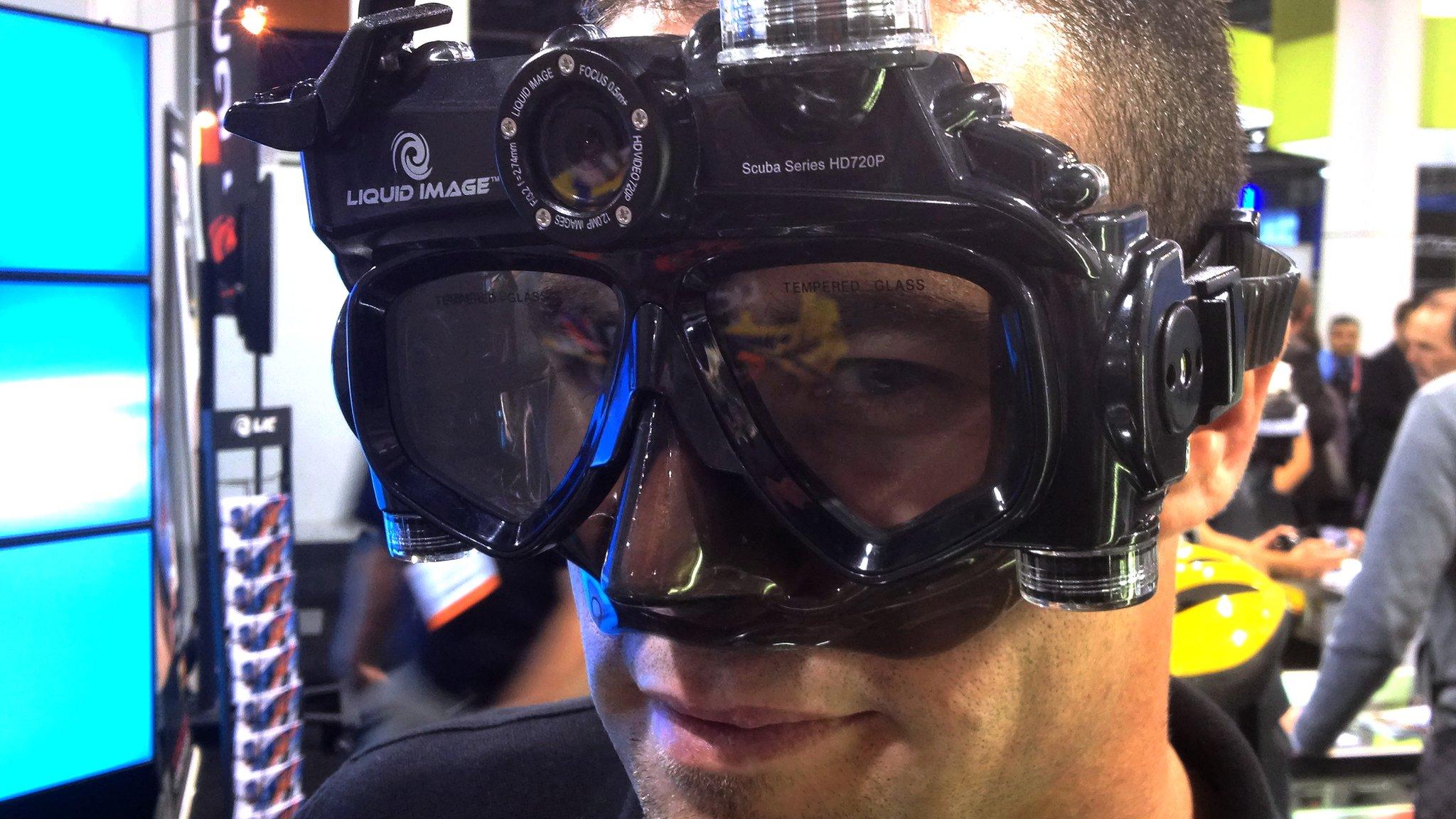'Hexacopter' changes the way TV reporters work
- Published
A look at the BBC's 'Hexacopter'
I am not old, but I accept that this could be an old man thing to say. I cannot believe how things have changed since I first started work.
When I walked through the doors of BBC Essex as a not very fresh-faced reporter in the mid-1990s the first thing they gave me was a big box of kit I could barely lift.
Inside was a reel-to-reel tape recorder called a Uher (pronounced Yyu-er) and I had to lug it everywhere, including to my first job, interviewing a farmer in a field.
Sixteen years later, the farmer in the field bit has not changed, but the kit - my goodness. Well, have a look at the film. I have just become the first BBC reporter to use a "hexacopter".
New perspectives
I say "I" but there is a fantastic team involved. All I did was stand there trying not to fluff my lines while the hexacopter - a multi-bladed lump of carbon and titanium, sounding like a swarm of bees, flew towards me before catapulting itself into the sky.
The pictures speak for themselves. You cannot get shots like that with a helicopter, or a steadicam, or a boom, a jib, a dolley, a cream bun. OK, I made that last one up but you take the point.

The hexacopter is able to take video footage while soaring in the air and creeping across the ground
This machine is unique in being able to go close to something then soar into the air in one smooth movement. It can creep along the ground, shimmy a fence, crawl through a tree then climb to 400ft (120m) for a spectacular panorama.
As television and online journalists, we are very excited about its scope to change the perspective of our films.
Working in tandem
Hexacopter is run by a team from the Global Video Unit, part of BBC World Service Language Services. This was the first time everyone had used it so there were a few nerves fluttering around.
Our pilot, Owain, spent six months training for a special licence. There is another pilot, Tom Hannen, and between them they gave birth to the thing, building it before learning to fly it.
This is not the kind of machine you pick up in a shop - the kind of thing I have bought in the past and then flown into a tree.
Owain has got his hands full with the flying so he is helped out by a camera operator, Rhian. They have to be in tune for the best results, like circling your stomach and patting your head at the same time.

There are strict rules regulating where the hexacopter can fly and film
The first problem we had was the weather. There's no real point in flying if the wind is gusting above 20mph (32kph) and we were right on the limit.
The camera is mounted on a gimbal, a pivoted support that allows it to rotate, that keeps it steady even when the chopper is dancing around.
Have a look at how smooth the shot is, and that's despite the fact that the hexacopter was being tossed like a feather on the wind.
Learning curve
In the end, we figured that the best way to milk the machine's capabilities was to use it to surprise the viewer.
When the camera first comes out from behind the barrels, and points at me wearing my orange outfit, we hope you think it is just a person walking along with a camera on their shoulder.
Then comes the reveal. The camera takes off, flies over my head and climbs above the rail yard, just as a train is pulling out.
Confession time now. It took a long time to get that 20-second piece of telly right. Three or four hours, although that only includes 40 minutes flying time, 10 minutes per battery.
That is a long time for news, but we were on a steep learning curve. And there is another problem too. The noise of the rotors, the bee swarm problem. We have had to cheat the sound a bit to quieten it down. Credit here goes to my producer Jonathan Sumberg.
Regulated machine
Now, you might be thinking that this is a little bit sinister, potentially. That hexacopter could soon be flying over your head, spying.
I can put that worry to bed now - we are not allowed to use it like that. For starters, the BBC has established and strict filming rules, and secondly, the hexacopter is regulated by the Civil Aviation Authority. That means we cannot:
fly within 50m of a road or building unless it's under our control
fly over crowds
fly 500m horizontally or 120m vertically from the pilot
It also means we have to log a flight plan before every take-off. As an extra safety layer, there is a GPS-based system on board that ensures that if the radio link breaks down between the pilot and the machine it automatically flies back to where it took off from, and lands.
This was just our first go, which is why it took four hours to get the opening sequence right - but I admit we all absolutely loved using this machine. Believe me, it will transform television and online news.
The hexacopter is able to take a camera to places it has never been before, giving people a whole new view on the world. And we are very excited about that.
- Published29 July 2013
- Published16 September 2013

- Published5 March 2013
